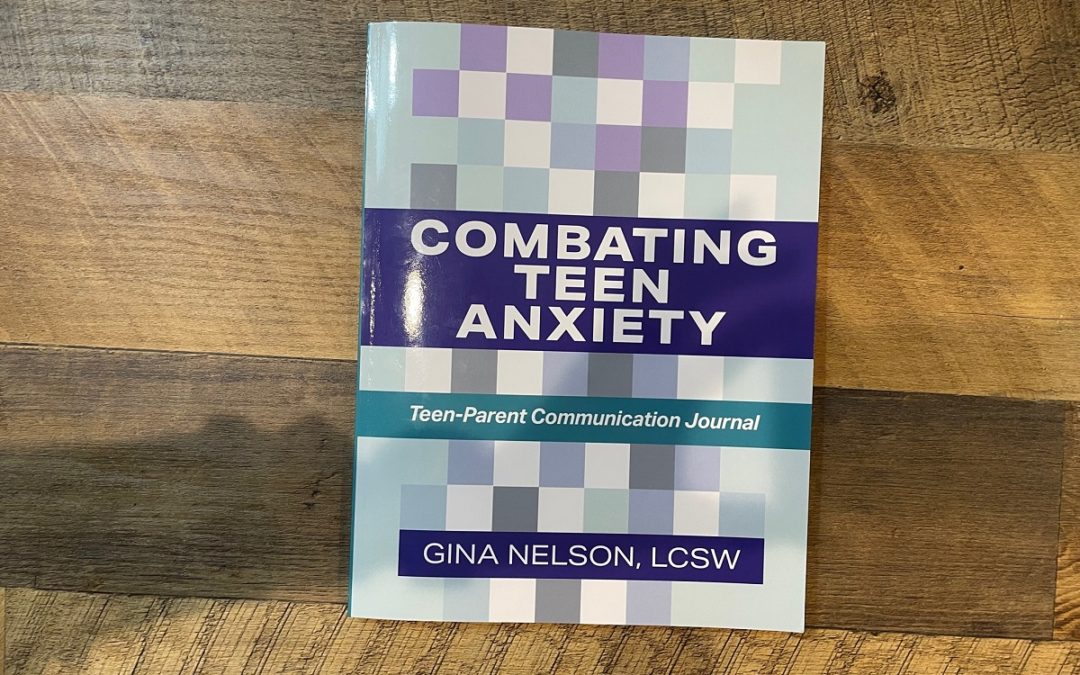Emotional Intelligence
One thing I’ve learned over 25 years in this field is that our emotional capabilities and abilities to recognize, name, and feel our emotions is something most of us lack. In fact, whether I’m sitting across from a teen or a 50 something year old in my office, the struggle to connect emotions with their body is real.
When we don’t understand how to really identify emotions and hold space to get curious about what is happening, we often spend our life running away from uncomfortable emotions. We stuff those difficult feelings away so that we can protect ourselves from falling into the emotional pit where we believe we can’t return to normal functioning.
Yet the solution is to walk into the emotions, not run from them. So how do we begin to feel safe facing our emotions and befriending them? Well it starts with the proper communication tools.
Combating Teen Anxiety Teen-Parent Communication Journal
Many of you know I developed a proven 10 step method to reduce anxiety and give teens the skills to manage their emotions so that they can succeed in their present and future goals. Anyone wanting more info can go to www.combatingteenanxiety.com to access your free mini course.
What you likely didn’t know is that I just published my first workbook called Combating Teen Anxiety Teen-Parent Communication Journal to give teens the language and tools to express themselves with their parents when conversations are difficult to discuss in person.
How It Works
The journal consists of prompts that allow teens or their parents to initiate a discussion using fill in the blank and free form response to express their feelings in a clear and productive manner. It also helps them to articulate what makes them feel unsafe coming to a parent or teen with their concerns.
The goal is to pay attention to the nervous system and learn to sit with uncomfortable feelings in order to move through them, rather than run from them. The journal is organized to allow teens and parents the opportunity to slow down their thoughts, identify their emotions, and understand where they are feeling these emotions inside their body so they can better articulate their thoughts and express their needs.
Purpose of the Journal
There are 6 key communication skills addressed in each journal entry.
The First prompt helps set the recipient up for a less defensive response by making a positive assumption of the other person’s intention. It’s important to acknowledge assumptions we make, or the story we tell ourselves about the other person’s intentions that likely is a false narrative.
The Second prompt helps either the parent or the teen find the words that express their feelings and describe what prompts them to feel this way. There is a feeling word chart to help increase your feelings vocabulary.
The Third prompt directs either the parent or teen to connect their feelings and sensations with their corresponding body location of where these feelings and sensations sit inside their body. This is so important because we can only catch our anxiety early if we can first identify where we feel emotions inside our body.
The Fourth Prompt helps address any nonverbal or verbal behavior that makes the parent or teen feel emotionally unsafe to talk about their feelings. This is a very important piece in helping to express vulnerable thoughts and feelings.
The Fifth prompt allows the author to identify what would make them feel safer to talk about the situation they are struggling with by eliciting some control and empowering them to ask for what they need to feel capable of expressing themselves effectively.
The Sixth prompt addresses the importance of the relationship between the parent and teen and allows either to write additional thoughts and feelings related to the entry.
While the journal is used to initiate emotion and conversation, the overall hope is that it will be the catalyst to an actual conversation between the teen and the parent. This is the most difficult step, which most people avoid because they’d rather just try to move forward rather than bring the tension of that conversation back up. It involves circling back into difficult conversations, taking accountability for your part and embracing connection through this vulnerable interaction.
These Journals are available for pre-order on Amazon and will be shipped on the official launch date of November 1st! So grab your copy and or copies for every teen you know. They will make great holiday gifts.
To get your copy go to:
https://www.amazon.com/Combating-Teen-Anxiety-Teen-Parent-Communication/dp/1949642895


